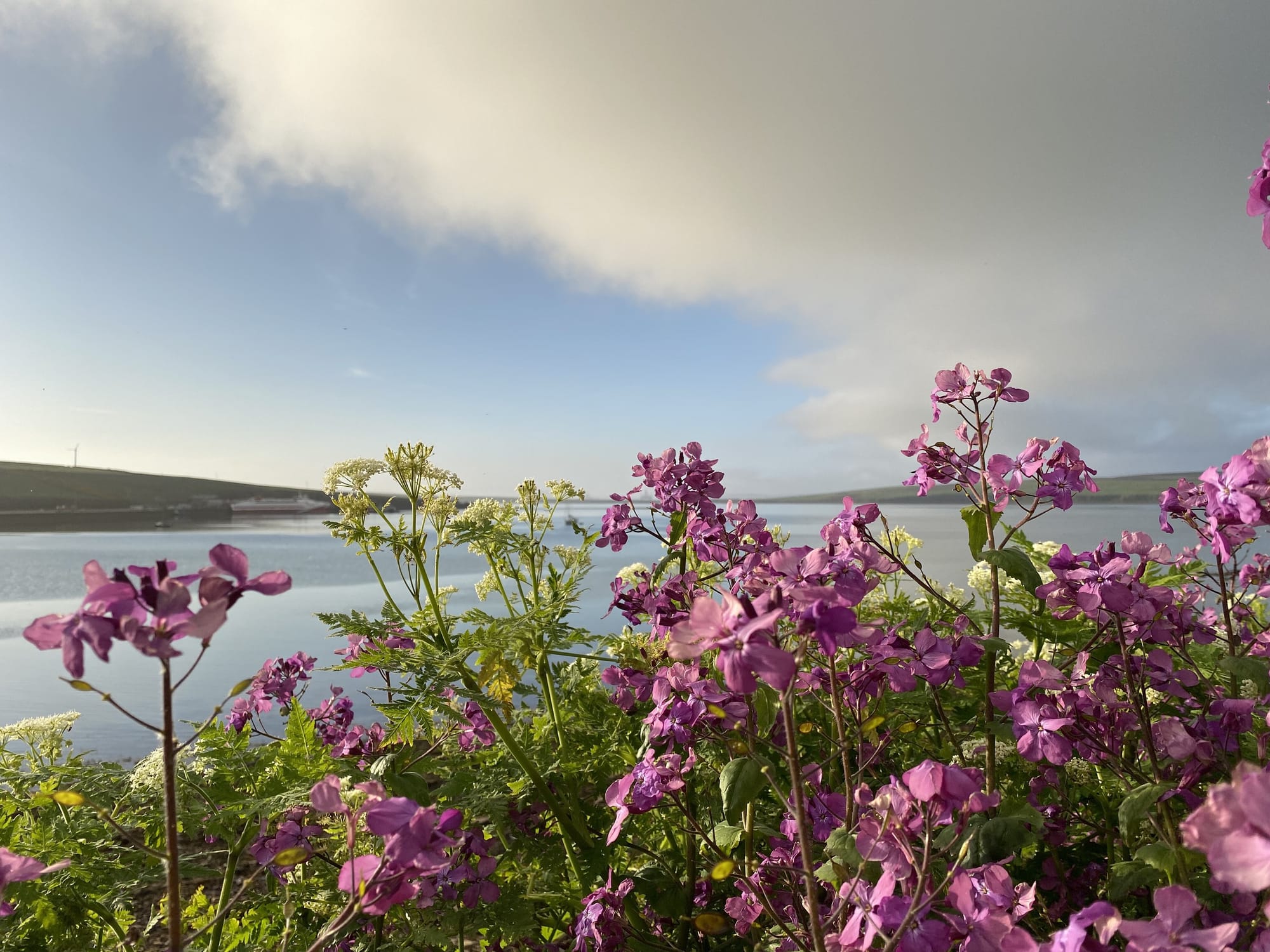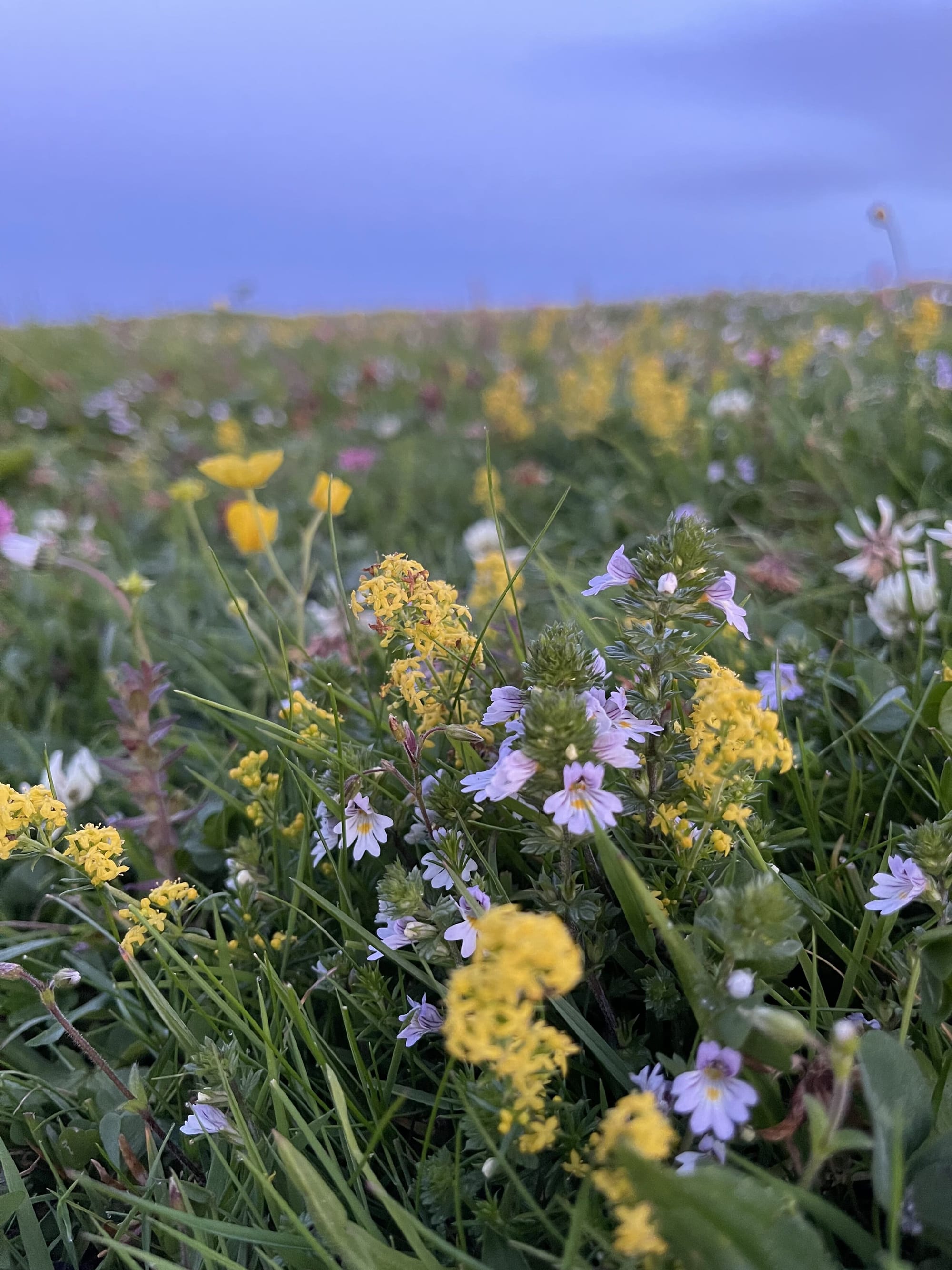'An Orkney Miracle Drink': How wildflowers heal us, inside and out

In November 2022, my husband, son and I packed up our belongings, bedded down the cat and ageing guinea pigs, and headed north to Orkney.
Arriving in the storm-eye of autumn and winter, our new lives began in the dark, like bulbs awaiting light.
The house we moved to is on the island of South Ronaldsay. Although the garden was very small, it was ours; our first home. Having spent the last decade fighting social housing regulations to grow a wild apothecary garden in Cumbria, I was excited to start again in a place we could call our own – but winter meant I would have to wait.
As the short, silver days and long nights stretched out, I walked the island, scanning the verges and scant bushes for familiar shapes, patterns, textures, trying to get a sense of my bearings in this unfamiliar, sea-locked land.
I kept watch for the usual signs of spring, but found no billowing mayflower hedgerows, no greening of branch. Instead, its arrival was marked by a softening of wind, the returning call of seabirds, and a lengthening of light that pulled seed and root from the ground. Embryonic in those first dark months, by May the garden raced to take shape, emboldened by days of double sun, the hours of light outweighing the slither of dark.
This strange season change confused me, like a plant uprooted. When should I seed? What will survive? I felt upended from the soil. This gap between myself and the ground increased. I neither belonged to where I had come from, nor to where I now was. As I had done before when things felt unsteady, I returned to the small things that grew.
I continued my slow-stepping walks, adjusting my eye to a different scale. The more I looked, the more I saw; this flora not tall or broad, but buttoned down, close-clutching the ground and cliff. This wild may have been born to survive the exposure of sea and rock, but I knew it held the same potential to heal as the landscape I had just left. I was keen to learn more about medicinal properties of the plants I now found.

Like Gretel in the fairy tale, I followed the trail of seeds and weeds back to their word-roots, discovering spell-like Orcadian names that rolled off the tongue: pulderuck (bog asphodel), smero (tormentil), spoot girs (angelica), grobyie (mugwort), cockalowrie (daisy), fudsho (meadow vetch). From scurvy grass to sea plantain, wild angelica to creeping juniper, oyster plant to sea pink, the often treeless landscape of Orkney turned out to hold a history of healing that has fascinated botanists for centuries.
Magnus Spence (1853–1919), an Orkney-based geologist, teacher and botanist, spent several years documenting the flora and fauna of the archipelago into Flora Orcadensis (1914). It is widely considered to be the first complete account of the islands’ flora, and includes medicinal information about many of the plants. Spence’s extensive herbarium is held at the local Stromness Museum. Comprising 918 remaining specimens, all but four were found in Orkney by Spence and fellow botanist Arthur Bennett (1843–1929).
Dr Elaine Bullard MBE (1915–2011), a self-taught British botanist and founding member of the Orkney Field Club, spent over 50 years recording the flora of Orkney and Caithness. Travelling in her Robin Reliant car, modified for use as a mobile bothy, she documented over 500 native species across 39 islands. Her campaigning resulted in the founding of the Orkney Biodiversity Records Centre, and her records have been used to assess the impact of changes in climate and land management.
The late Orkney naturalist, Effy Everiss, made detailed records of the local flora and fauna on her tiny home island, Graemsay, which she described as a ‘wild garden of Eden’. During her lifetime, she was a founding and prolific member of the Orkney Field Group. The Effy Everiss Natural History Library, on the island of Hoy, contains more than 150 books, donated by Effy, on everything from soils and seaweeds to mammals and birds.
Their work offered me a looking-glass through which to understand my new home. I discovered that sea pink, or thrift, is otherwise known on Orkney as arby; the roots sliced and boiled in milk as a traditional local treatment for tuberculosis. In An Account of the Islands of Orkney, written in the seventeenth century by the Reverend James Wallace, I stumbled upon a reference to an Orkney Miracle Drink, reportedly taken to cure ‘the Axes’, an apparently common affliction suffered by Orcadians in springtime.
Wallace discounted the drink as ‘old-woman’s quackery’, but that didn’t stop him recording the ingredients, many of which have long histories in medicinal herbalism. Opening a fresh notebook, I began to jot down rudimentary notes:
- Buck’s horn plantain is used for coughs and colds;
- water plantain flushes out toxins;
- lovage is a diuretic used to reduce fluid retention;
- wild daisy is good for clearing phlegm;
- rocket is high in antioxidants, vitamins and minerals;
- elecampane is a powerful expectorant;
- millfoil/yarrow aids sluggish digestion;
- spignel (root) reduces bloating;
- dandelion supports the immune system and helps to detoxify the liver;
- parsley (root) is diuretic and rich in antioxidants, vitamins and minerals;
- wormwood was used to treat intestinal worms and reduce bloating;
- comfrey is rich in allantoin, used to support nursing mothers (though is not considered safe for oral consumption now);
- tansy was used to cure gout and worms;
- sea pink was used for consumption (tuberculosis);
- angelica was common in remedies for joint inflammation, colds, respiratory and bowel upset;
- masterwort was used as an antiviral treatment for respiratory infections and digestive issues.
This was a drink to get you going again, inside and out.
But the name of the ailment this miracle drink was designed to cure was curious to me. Knowing that many common names for plants give clues to their medicinal properties, I looked up ‘axes’. In earlier winters, Orkney croft houses would have been lit with a soft rush, locally known as axes girse, gathered from the heaths and moors. This physical act of bringing the light in would have been a hopeful symbol of brighter times to come – but also symbolic of the long, dark winters here. Was ‘the Axes’ a common name for the sluggishness of winter, the damp wind and dark seeping into your bones?
As I make it through my second winter here, I too feel some of that sluggishness. I could do with some of the old miracle drink now.
I still feel some of that early displacement but it is less so. Though the storms have not given up their grip, I know spring is coming. The days creep outwards, lengthening into light. Each day, I step out into the garden to see what is showing, knowing that the seeds I sowed last year are beginning to wake. I look out onto the dark soil, and know that, by June, it will be filled with colour again.
Yesterday, I spotted the first of the dog flooers (dandelions) opening outside my window. In the coming months, the shore will begin to blush as the sea pinks return, fading to a silvering of moorek (silverweed). By midsummer, the yule girs (meadowsweet) will decorate the roadsides, and the path across the low dunes will be painted with the butter-yellow of cheese rening (lady’s bedstraw) and clustered stars of meely follies (yarrow).
These small, wild flowers are my anchors. They connect me with the landscape and help me put down roots. I am excited to see the first sign of roseroot pushing through; a plant that would not grow in my old garden but thrives here, native to this soil.
With over half of the UK native wildflower population lost or in decline, we face more than just the disappearance of species or habitat. Threatened, too, is the knowledge that they hold, passed down in the spore and seed. Slow down, they whisper. Notice.
I slow down and listen to what they have to say.
This feature was made possible by funding from The Pebble Trust.
